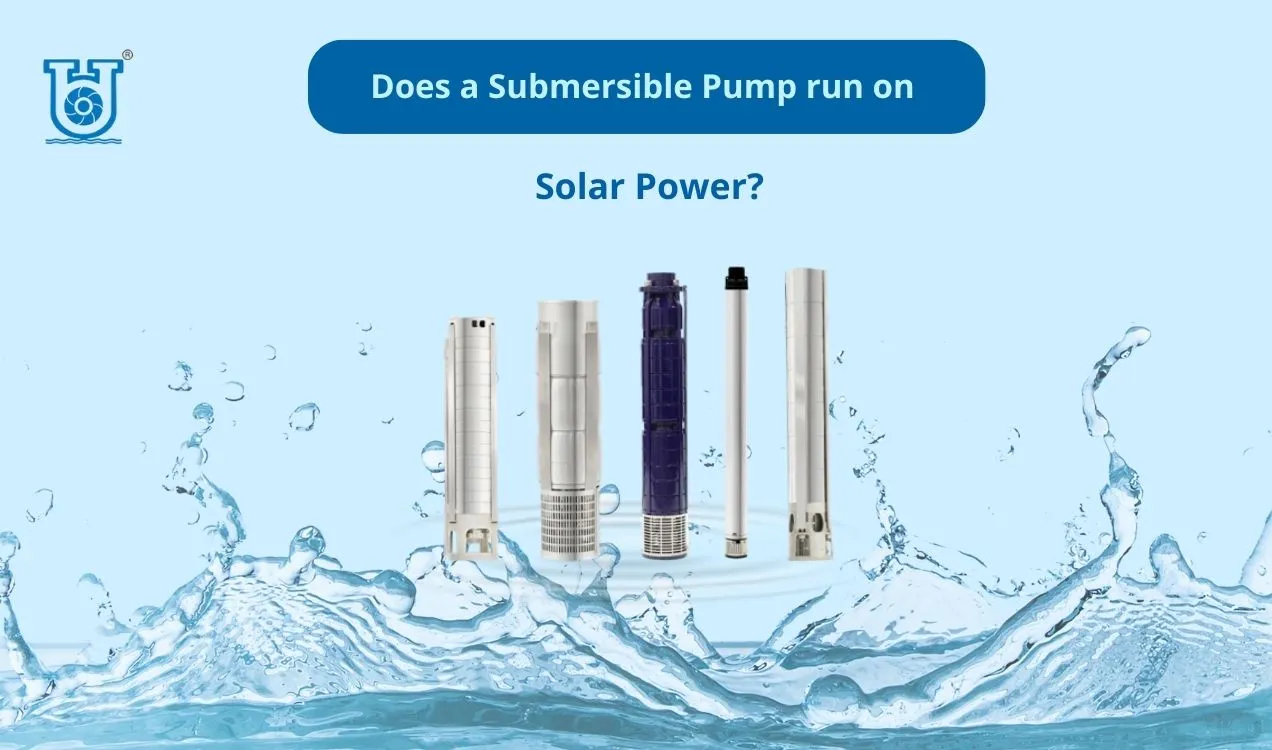In the past few years, more people have been looking for cleaner energy alternatives instead of using regular electricity. And there’s no better option than switching to solar power.
There are many possible ways to use solar energy effectively. One exciting and practical application of solar energy is powering submersible pumps. But can these pumps truly run efficiently on solar power? The answer is “Yes” they can.
Submersible pumps can run on solar energy, offering a sustainable solution for areas with limited access to the electrical grid. In this blog, we’ll explore how solar power drives these pumps, compare DC and AC pumps, and guide you in calculating the number of solar panels needed.
How Solar Power Drives Submersible Pumps?
Solar-powered submersible pumps use sunlight to generate electricity and drive the pump. The system typically includes three main components:
- Solar Panels: Convert sunlight into direct current (DC) electricity.
- Inverter: Converts DC electricity into alternating current (AC) required by certain pumps.
- Pump Controller: Regulates power to the pump and protects it from voltage fluctuations.
Optional: Some systems also include batteries to store excess energy. Although batteries are an optional, some people do utilize them in their system. It stores extra energy from the sun and allows the pump to work on cloudy days or at night.
DC vs. AC Submersible Pumps: Which One is Better?
Whenever you plan to install a solar submersible pump, you’ll face one common question: which should you prefer, an AC or DC pump?
But, what are the main differences between them? Let’s clear here.
| Features | DC Pumps | AC Pumps |
|---|---|---|
| Power Source | Powered directly by solar panels (no inverter needed) | Need an inverter to convert solar DC power to AC power |
| Energy Efficiency | More efficient (no energy loss from conversion) | Slightly less efficient (energy lost during conversion) |
| Best For | Small setups, where simplicity and efficiency matter | Larger installations, like homes and farms |
| Availability | Less common but simple and effective | More widely available and works with the electrical grid |
| Usage Flexibility | Dedicated solar setups | Can switch between solar and grid power when needed |
In short, DC pumps should be considered when you need small, energy-efficient systems. On the other hand, AC pumps are more common, especially for bigger setups and areas where switching between solar and traditional grid power is useful.
How to Determine the Number of Solar Panels?
The question now arises: how to know the number of solar panels needed for a Submersible pump?
The number of solar panels you need basically depends on how much power the submersible pump uses. The power in this scenario is usually measured in horsepower (HP), and also how much sunlight your area gets.
Sounds confusing? Let us clear step-by-step:
Step 1: First of all, you have to find out how much power your pump uses. For example, a 1 horsepower (HP) submersible pump usually needs about 746 watts.
Step 2: Your next step would be figuring out your daily energy needs. For that, you can multiply the pump’s power by how many hours you plan to run it each day.
Let’s suppose the pump runs for 7 hours, the amount of energy it needs is:
746 watts X 7 hours = 5222 watt-hours (Wh).
Step 3: Now, consider sunlight hours. The amount of sunlight your area gets each day impacts how many solar panels you’ll need. If you get 6 hours of sunlight daily, divide the total energy needed by those sunlight hours to find out how much solar power you need:
5222 Wh / 7 hours = 746 watts.
It means your requirement is around 800 watts of solar panels.
Step 4: If each solar panel produces 400 watts, you just need to divide the total needed power by 400 to find out how many panels you need.
800 watts / 400 W per panel = 2 Panels.
According to the above example, you would need at least two 300W solar panels to run a 1 horsepower (HP) submersible pump for 7 hours/per day.
Please keep in mind that this was just an example. That’s why, you have to look at your own things and figure out your exact requirements.
Conclusion
Submersible pumps powered by solar energy are a practical, eco-friendly alternative to traditional electric systems. They’re especially beneficial in remote areas with unreliable grid power. However, to ensure smooth operation, it’s essential to carefully plan your system, choosing between DC or AC pumps and calculating the right number of solar panels.
With proper equipment and planning, solar-powered submersible pumps provide a reliable water supply while helping you save energy and reduce costs.


